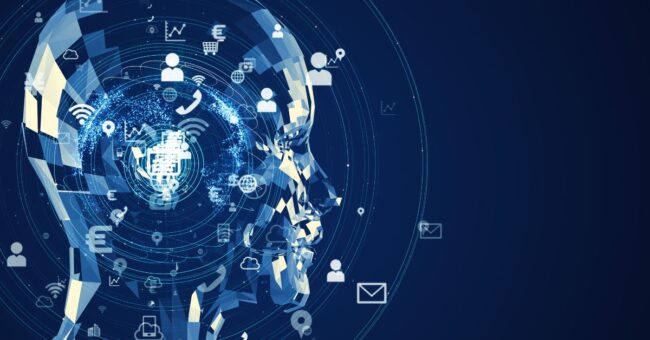Imagine a world where team collaboration is seamless, communication is effortless, and productivity soars to new heights. Thanks to advancements in artificial intelligence (AI), this vision is becoming a reality. AI-powered virtual assistants and chatbots are revolutionizing the way teams interact, enhancing communication, fostering collaboration, and streamlining workflows. In this article, we will delve into the power of AI in enhancing team interaction, exploring the various benefits it brings to the table and highlighting real-world examples of its application. So sit back, grab a cup of coffee, and let’s discover the incredible potential of AI in transforming team dynamics.

The Role of AI in Team Interaction
In today’s fast-paced and technology-driven world, effective team interaction is crucial for the success of any organization. With the advancements in Artificial Intelligence (AI), teams now have access to powerful tools that can enhance communication, streamline workflow processes, improve decision-making, and ultimately enhance productivity and efficiency. In this article, we will explore the role of AI in team interaction and discuss its benefits, challenges, and best practices for implementation. So, let’s dive in and discover the power of AI in enhancing team interaction.
Enhancing Communication and Collaboration
Communication is the backbone of any successful team. AI-powered tools can greatly enhance communication and collaboration among team members. With real-time language translation, language barriers can be overcome, enabling effective communication among team members from different parts of the world. AI algorithms can analyze and translate speech or written text into multiple languages, ensuring that all team members can understand and contribute to discussions and projects.
Another way AI enhances communication is through chatbots and virtual assistants. These intelligent virtual entities can help teams with common queries and tasks, such as finding files, scheduling meetings, or providing project updates. With natural language processing capabilities, chatbots can understand and respond to user requests, providing instant support and freeing up valuable time for team members to focus on more complex tasks.
Collaboration platforms, such as Slack or Microsoft Teams, also utilize AI to facilitate team interaction. These platforms provide a centralized hub where team members can communicate, share files, and collaborate on projects in real-time. AI algorithms can intelligently categorize and organize conversations, making it easier for team members to find relevant information quickly.
Streamlining Workflow Processes
AI-powered tools can streamline workflow processes, making project management more efficient and effective. Project management tools, like Trello or Asana, utilize AI algorithms to automatically assign tasks, set priorities, and track progress. These tools can analyze team members’ work patterns, identify bottlenecks, and suggest ways to optimize workflows. By automating repetitive and time-consuming tasks, AI allows teams to focus on more strategic and creative aspects of their work.
Another way AI streamlines workflow processes is through automated meeting scheduling. AI algorithms can analyze team members’ calendars, preferences, and availability to identify the best times for meetings. Virtual assistants, like Google Assistant or Alexa, can then take care of scheduling the meeting, sending out invites, and even setting reminders. This eliminates the hassle of back-and-forth communication and ensures that meetings are scheduled at convenient times for all team members.
Improving Decision-making
In today’s rapidly changing business landscape, making informed and data-driven decisions is crucial. AI-powered tools can help teams analyze and interpret large volumes of data, enabling them to make better decisions in a shorter amount of time. Intelligent data analysis algorithms can identify patterns, trends, and correlations in data, providing valuable insights to support decision-making processes.
AI can also help teams simulate different scenarios and predict outcomes. For example, in financial planning or marketing campaigns, AI algorithms can analyze historical data and market trends to forecast future performance. This allows teams to make more accurate and informed decisions, reducing risks and maximizing opportunities.
Furthermore, AI can assist teams in conducting sentiment analysis. By analyzing customer feedback, social media trends, or employee surveys, AI algorithms can provide insights into the sentiment and preferences of various stakeholders. This information can guide teams in developing strategies and initiatives that resonate with their target audience, leading to more successful outcomes.
Enhancing Productivity and Efficiency
One of the key benefits of AI in team interaction is the potential to enhance productivity and efficiency. By automating routine tasks, teams can free up valuable time and resources to focus on more strategic and complex activities. AI-powered chatbots and virtual assistants can handle common queries and tasks, such as providing information or generating reports, reducing the need for manual intervention.
Collaboration platforms enable real-time communication and file sharing, eliminating the need for back-and-forth email exchanges or physical meetings. This not only saves time but also ensures that all team members have access to the most up-to-date information and can collaborate seamlessly.
Project management tools with AI capabilities can optimize workflows, ensuring that tasks are assigned to the right people at the right time. By automatically prioritizing and tracking tasks, teams can stay organized and ensure that projects are completed on time and within budget.
AI also has the potential to improve the overall quality of work. For example, AI algorithms can analyze documents or code to identify errors, inconsistencies, or vulnerabilities. This helps teams produce higher-quality deliverables and reduces the risk of errors or security breaches.
Benefits of AI in Team Interaction
Now that we have explored the role of AI in team interaction, let’s delve into the specific benefits that AI brings to the table.
Real-time Language Translation
Language barriers can hinder effective team communication, especially in global or multicultural teams. AI-powered language translation tools can instantly translate spoken or written text into multiple languages, enabling seamless communication among team members. This not only enhances collaboration but also promotes inclusivity and diversity within the team.
Automated Meeting Scheduling
Scheduling meetings can be a tedious and time-consuming task, especially when team members have different schedules and preferences. AI algorithms can analyze everyone’s availability and preferences to find the best meeting times. Virtual assistants can then take care of sending out invites, setting reminders, and even rescheduling meetings if necessary. This saves valuable time and ensures that meetings are scheduled at convenient times for all team members.
Intelligent Data Analysis
In today’s data-driven world, the ability to analyze and interpret data is crucial for making informed decisions. AI-powered data analysis tools can process large volumes of data quickly, identifying patterns, trends, and correlations. This enables teams to gain valuable insights and make data-driven decisions. Whether it’s analyzing sales data, customer feedback, or market trends, AI can provide teams with a competitive edge.
Virtual Team Collaboration
In an increasingly remote and flexible work environment, virtual team collaboration is essential. AI-powered collaboration platforms, such as Microsoft Teams or Slack, provide a centralized hub where team members can communicate, share files, and collaborate in real-time. These platforms utilize AI algorithms to organize conversations, suggest relevant files or resources, and provide instant notifications. This ensures that all team members are on the same page and can collaborate effectively, regardless of their physical location.
Challenges in AI-Enhanced Team Interaction
While the benefits of AI in team interaction are evident, there are also challenges that need to be considered. Let’s explore some of the key challenges associated with AI-enhanced team interaction.
Data Privacy and Security
AI-powered tools often require access to sensitive data, such as personal information or confidential project files. Ensuring the privacy and security of this data is crucial to maintain trust and compliance. Organizations must implement robust security measures, such as encryption and access controls, to protect sensitive data from unauthorized access or breaches. Additionally, clear policies and procedures should be established to govern the collection, storage, and usage of data by AI systems.
Ethical Considerations
As AI becomes more sophisticated, ethical considerations become increasingly important. AI algorithms are trained on vast amounts of data, which may contain biases or discriminatory patterns. This can result in biased decision-making or unfair outcomes. Organizations must strive to develop and train AI systems that are fair, transparent, and accountable. Regular audits and reviews should be conducted to ensure that AI systems comply with ethical standards and regulations.
Dependency on Technology
While AI-powered tools can greatly enhance team interaction, there is a risk of over-reliance and dependency on technology. Teams must strike a balance between leveraging AI for productivity and maintaining human-centered interactions. It’s important not to lose the human touch and personal connection that is essential for effective collaboration. AI should be seen as an enabler rather than a replacement for human interaction.
Lack of Human Touch
One of the challenges of AI-enhanced team interaction is the potential loss of the human touch. While AI-powered tools can automate tasks and provide efficient solutions, they may lack the empathy and intuition that comes with human interaction. Effective team collaboration often involves emotional intelligence, understanding non-verbal cues, and building relationships. Organizations must find ways to balance the efficiency of AI with the importance of human connection to maintain a positive team dynamic.
AI Tools for Team Interaction
Now that we have explored the benefits and challenges of AI in team interaction, let’s delve into some of the AI tools that can enhance team collaboration and productivity.
Chatbots and Virtual Assistants
Chatbots and virtual assistants can provide instant support and automate routine tasks, freeing up valuable time for team members. These intelligent entities can handle common queries, such as providing information, generating reports, or scheduling meetings. By leveraging natural language processing capabilities, chatbots can understand and respond to user requests, providing a seamless user experience.
Collaboration Platforms
Collaboration platforms, like Microsoft Teams, Slack, or Google Workspace, provide a centralized hub where team members can communicate, share files, and collaborate in real-time. These platforms utilize AI algorithms to organize conversations, suggest relevant files or resources, and provide instant notifications. They enable teams to collaborate seamlessly, regardless of their physical location or time zone.
Project Management Tools
Project management tools, such as Trello, Asana, or Jira, utilize AI capabilities to optimize workflows and track project progress. These tools can automatically assign tasks, set priorities, and provide insights on team performance. By analyzing work patterns and identifying bottlenecks, AI-powered project management tools help teams optimize their processes and deliver projects on time.
Video Conferencing Solutions
Video conferencing solutions, such as Zoom or Microsoft Teams, have become essential for remote team collaboration. AI-powered features in these solutions, such as background noise cancellation or automatic transcription, enhance the quality of virtual meetings. AI algorithms can also analyze facial expressions and gestures, providing real-time feedback on participants’ engagement and sentiment.

Best Practices for Implementing AI in Team Interaction
Implementing AI in team interaction requires careful planning, consideration, and adherence to best practices. Let’s explore some key best practices for successfully integrating AI into team interaction.
Ensuring Data Privacy and Security
When implementing AI-powered tools, organizations must prioritize data privacy and security. Robust security measures, such as encryption, access controls, and regular backups, should be in place to protect sensitive data. Additionally, organizations must establish clear policies and procedures to govern the collection, storage, and usage of data by AI systems. Regular audits and reviews should be conducted to ensure compliance with data protection regulations.
Training and Education
To fully benefit from AI in team interaction, team members must be trained on how to effectively use AI-powered tools. Training programs should focus not only on the technical aspects of the tools but also on the benefits, limitations, and ethical considerations associated with AI. By investing in training and education, organizations can empower their teams to leverage AI tools for enhanced collaboration and productivity.
Regular System Updates and Maintenance
AI-powered tools evolve rapidly, with new features and updates being released frequently. Organizations must ensure that AI systems are regularly updated to benefit from the latest advancements and improvements. Regular maintenance and monitoring should also be conducted to identify and address any performance issues or vulnerabilities. Keeping AI systems up to date ensures optimal functionality and security.
Human Oversight and Support
While AI-powered tools can automate tasks and provide efficient solutions, human oversight and support are still crucial. Organizations must assign dedicated resources to oversee AI systems, monitor their performance, and intervene when necessary. It’s important to have human intervention points in place to resolve complex issues, interpret AI-generated insights, and maintain the human touch in team interaction.
Case Studies on AI in Team Interaction
To showcase the real-world application and impact of AI in team interaction, let’s explore a few notable case studies:
Microsoft Teams – Transforming Team Collaboration
Microsoft Teams is a collaboration platform that utilizes AI to enhance team interaction. With features like real-time language translation, background noise suppression, and automated meeting scheduling, Microsoft Teams empowers teams to communicate, collaborate, and make informed decisions. The use of AI algorithms in Teams’ chatbot, known as “Who,” enables instant support and reduces the need for manual intervention.
Slack – Enhancing Communication and Workflow
Slack is another popular collaboration platform that leverages AI to enhance team communication and workflow. With its intelligent search capabilities, Slack can analyze conversations, files, and integrated apps to provide relevant information quickly. AI-powered features like suggested channels or people and intelligent notifications help teams stay organized and seamlessly collaborate in real-time.
Google Workspace – Intelligent Tools for Team Interaction
Google Workspace, formerly known as G Suite, offers a suite of intelligent tools that enhance team interaction. The integration of AI in tools like Gmail, Google Docs, and Google Calendar allows teams to collaborate seamlessly. Features such as Smart Compose, Smart Reply, and Natural Language Processing enable teams to work efficiently and accomplish more in less time.
Trello – Streamlining Project Management
Trello is a project management tool that utilizes AI capabilities to streamline workflows and track project progress. With AI-powered suggestions, Trello can automate the assignment of tasks, set due dates, and provide insights on team performance. By analyzing work patterns and identifying bottlenecks, Trello empowers teams to optimize their processes and deliver projects on time.

Future Trends in AI-Enhanced Team Interaction
As AI continues to evolve, new trends and innovations are shaping the future of team interaction. Let’s explore some of the exciting trends that we can expect to see in AI-enhanced team interaction:
Advanced Natural Language Processing
Natural Language Processing (NLP) is a field of AI that focuses on understanding and processing human language. Advanced NLP algorithms will enable AI systems to understand context, nuances, and intent more accurately. This will result in improved virtual assistant capabilities, more natural and conversational interactions, and enhanced language translation tools.
Emotion Recognition and Response
Emotion recognition technology is gaining traction in AI-enhanced team interaction. AI algorithms can analyze facial expressions, tone of voice, and other cues to detect emotions and sentiment. This technology can provide valuable insights into team dynamics, employee engagement, and customer satisfaction. Emotion recognition and response capabilities can be utilized in virtual team collaboration, customer support interactions, and employee wellness initiatives.
Augmented and Virtual Reality Integration
The integration of augmented reality (AR) and virtual reality (VR) with AI will revolutionize team interaction. AR overlays digital information onto the real world, enhancing collaboration and knowledge sharing. VR provides immersive environments where team members can interact and collaborate in a virtual space, regardless of their physical location. AI algorithms can enhance AR/VR experiences by delivering personalized content, real-time insights, and intelligent virtual assistance.
Intelligent Virtual Assistants
Virtual assistants, powered by AI and natural language processing, will become even more intelligent and capable. These virtual entities will not only perform routine tasks but also anticipate users’ needs and personalize interactions. Intelligent virtual assistants will understand context, preferences, and historical data to provide proactive support, make suggestions, and automate workflows. This will save time and enhance team productivity.
Conclusion
AI has emerged as a powerful tool for enhancing team interaction in today’s fast-paced and technology-driven world. From improving communication and collaboration to streamlining workflows, making better decisions, and enhancing productivity, the benefits of AI in team interaction are significant. However, it is important to address challenges such as data privacy and security, ethical considerations, dependency on technology, and the need for human touch.
By leveraging AI tools like chatbots, collaboration platforms, project management tools, and video conferencing solutions, teams can enhance their collaboration and productivity. Following best practices such as ensuring data privacy, providing training and education, regular updates and maintenance, and maintaining human oversight and support are crucial for successful implementation of AI in team interaction.
Through case studies, we have seen how organizations like Microsoft Teams, Slack, Google Workspace, and Trello are leveraging AI to transform team interaction. Looking into the future, advanced natural language processing, emotion recognition and response, augmented and virtual reality integration, and intelligent virtual assistants are some of the exciting trends that will shape the future of AI-enhanced team interaction. The power of AI lies in its ability to augment and enhance human capabilities, enabling teams to collaborate seamlessly, make informed decisions, and achieve their goals more efficiently.


